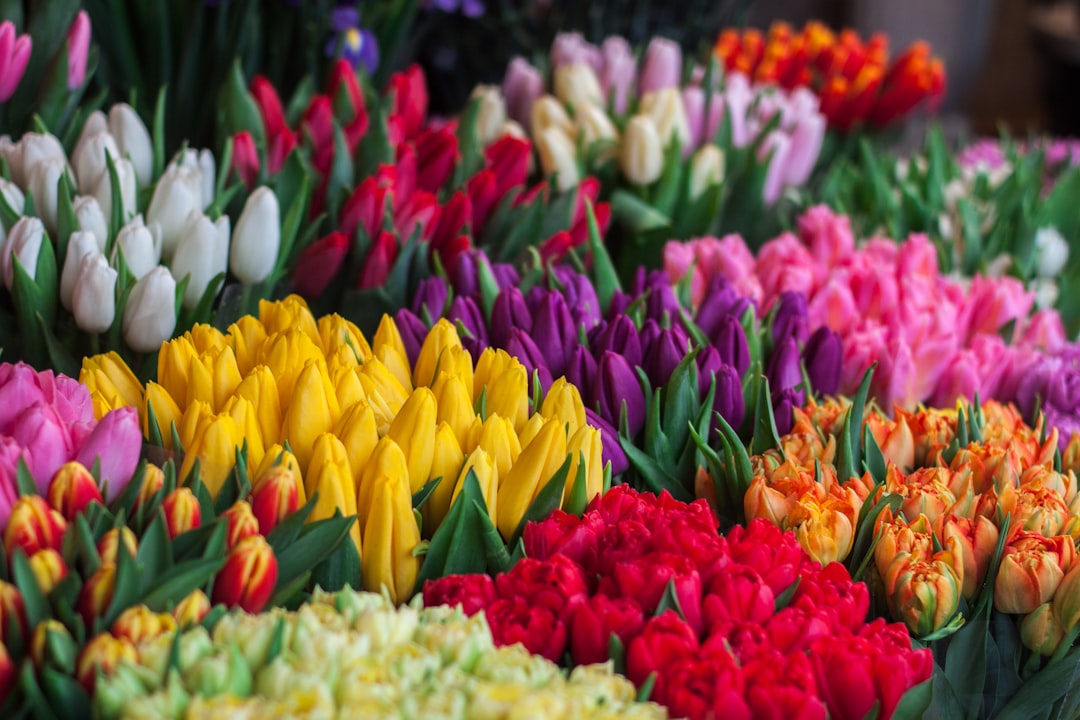The Tulip Mania Chronicles: How a Flower Captivated the World and Changed History
Tulips, with their vibrant colours and elegant shapes, have long captivated the hearts of gardeners and flower enthusiasts across the globe. Originating from the windswept steppes of Central Asia, these charming blooms have a history as rich and varied as their petal hues. From becoming emblems of opulence during the Tulip Mania of the 1600s to symbolising love and purity in modern times, the tulip’s journey is as fascinating as it is fragrant. In this exploration, we delve into the intriguing history of tulips, uncover their symbolic meanings, and offer practical advice on how to grow tulips with ease. Join us as we embark on an enchanting journey through gardens past and present, discovering how these beloved flowers can transform any space into a vibrant oasis.
The Fascinating History of Tulips
The tulip’s journey from the wild steppes of Central Asia to the manicured gardens of Europe is a tale of beauty, obsession, and economic upheaval. Let’s explore the captivating history of these beloved blooms.
Tulip Origins and Early Cultivation
Tulips, originally wild flowers, were first cultivated in the Ottoman Empire. Their striking beauty quickly caught the attention of European travellers and botanists.
The flower’s name is believed to come from the Turkish word for turban, ‘tülbend’, due to its resemblance to the headwear. Tulips were introduced to Europe in the 16th century, where they quickly gained popularity among the elite.
Carolus Clusius, a renowned botanist, played a crucial role in spreading tulip cultivation across Europe. He established one of the first formal tulip gardens at the University of Leiden in the Netherlands, setting the stage for the country’s enduring love affair with these flowers.
Tulip Mania: An Economic Frenzy
Tulip Mania, a period of extraordinary speculation in the Dutch Golden Age, remains one of the most famous market bubbles in history.
In the 1630s, tulip bulbs became a luxury item and status symbol. Prices skyrocketed, with some rare bulbs fetching sums equivalent to the cost of a house. This frenzy reached its peak in 1637 when a single bulb could be traded for a dozen sheep or several tons of cheese.
The bubble eventually burst, causing significant economic distress. While the extent of the crisis is debated by historians, Tulip Mania serves as a cautionary tale about speculative bubbles and irrational market behaviour.
Tulips as Symbols of Love and Wealth
Throughout history, tulips have been imbued with various meanings and symbolism. In the language of flowers, tulips generally represent perfect love.
Different colours carry distinct meanings: red for true love, pink for affection, yellow for cheerful thoughts, and white for forgiveness. In the Ottoman Empire, tulips symbolised paradise on earth and were a sign of abundance and indulgence.
In modern times, tulips continue to be associated with spring, renewal, and the Netherlands, where they remain an important part of the national identity and economy.
How to Grow and Care for Tulips
Tulips are relatively easy to grow, making them a favourite among both novice and experienced gardeners. With proper care, these beautiful flowers can thrive in various climates and soil conditions.
Soil Preparation and Planting Times
Successful tulip cultivation begins with proper soil preparation and timing. These factors are crucial for healthy growth and vibrant blooms.
Tulips prefer well-draining soil rich in organic matter. Before planting, work compost or well-rotted manure into the soil to improve its structure and nutrient content. The ideal pH for tulips is between 6.0 and 7.0.
Plant tulip bulbs in autumn, typically 4-8 weeks before the ground freezes. This allows the bulbs to establish roots before winter dormancy. Plant the bulbs pointed end up, about 4-6 inches deep and 4-6 inches apart.
In warmer climates where the ground doesn’t freeze, you can chill the bulbs in the refrigerator for 6-8 weeks before planting in late winter or early spring.
Seasonal Maintenance and Tulip Care Tips
Proper care throughout the seasons ensures healthy tulips and prolongs their blooming period. Here are some essential tulip care tips:
-
Water thoroughly after planting, then sparingly until leaves appear.
-
Apply a layer of mulch in winter to protect bulbs from freeze-thaw cycles.
-
Feed with a balanced fertiliser when shoots appear and after flowering.
-
Remove spent flowers to prevent seed formation and conserve energy.
After blooming, allow the foliage to die back naturally. This process helps the bulb store energy for next year’s growth. You can lift and store bulbs in summer if your soil is heavy or prone to waterlogging.
For perennial tulips, consider planting them deeper than usual (about 8 inches) to protect from temperature fluctuations and encourage repeat blooming.
Captivating Beauty of Tulips
The allure of tulips extends far beyond their horticultural appeal. These flowers have inspired artists, poets, and gardeners for centuries, leaving an indelible mark on culture and aesthetics.
Brightening Homes and Gardens
Tulips have an unparalleled ability to bring colour and cheer to any space, making them a favourite for both indoor and outdoor decoration.
In gardens, tulips create stunning displays when planted in drifts or mixed with other spring-flowering bulbs. Their wide range of colours allows for endless creative combinations, from soft pastels to bold, vibrant hues.
As cut flowers, tulips continue to grow in the vase, creating dynamic arrangements that change over time. Their simplicity and elegance make them suitable for various interior styles, from minimalist modern to cosy traditional.
For a long-lasting indoor display, choose tulips with tight buds and place them in cool water. Change the water regularly and trim the stems every few days to prolong their vase life.
Tulips in Art and Culture
Tulips have been a popular subject in art and literature for centuries, reflecting their cultural significance and aesthetic appeal.
In painting, tulips feature prominently in still life compositions, particularly in Dutch Golden Age art. Artists like Jan Davidsz de Heem and Ambrosius Bosschaert created intricate floral arrangements showcasing the beauty of tulips.
In literature, tulips have inspired poets and writers. Sylvia Plath’s poem “Tulips” uses the flowers as a powerful metaphor for life and emotion. Alexandre Dumas’s novel “The Black Tulip” weaves a tale of love and intrigue around the pursuit of a perfect black tulip.
Today, tulips continue to inspire modern artists and designers, appearing in contemporary art, fashion, and graphic design. Their simple yet striking form makes them a versatile motif in various creative fields.











